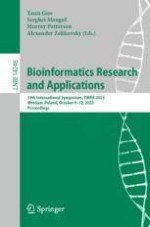2023 | OriginalPaper | Buchkapitel
ABCAE: Artificial Bee Colony Algorithm with Adaptive Exploitation for Epistatic Interaction Detection
verfasst von : Qianqian Ren, Yahan Li, Feng Li, Jin-Xing Liu, Junliang Shang
Erschienen in: Bioinformatics Research and Applications
Verlag: Springer Nature Singapore
Aktivieren Sie unsere intelligente Suche, um passende Fachinhalte oder Patente zu finden.
Wählen Sie Textabschnitte aus um mit Künstlicher Intelligenz passenden Patente zu finden. powered by
Markieren Sie Textabschnitte, um KI-gestützt weitere passende Inhalte zu finden. powered by
